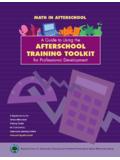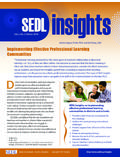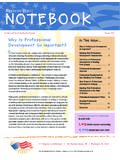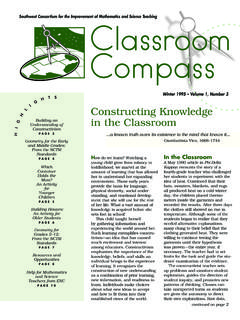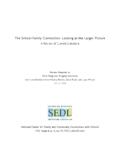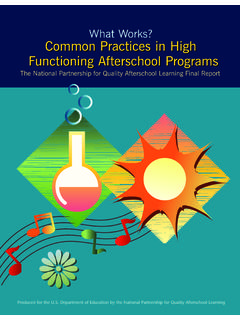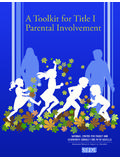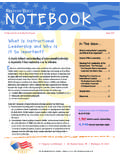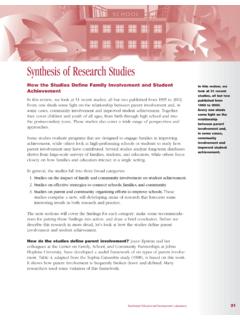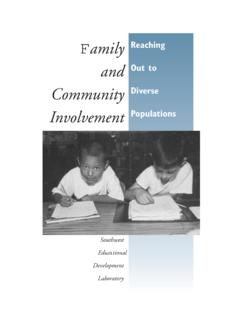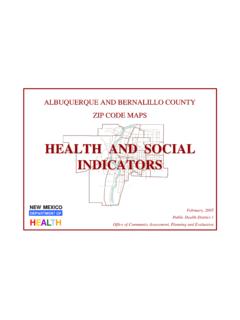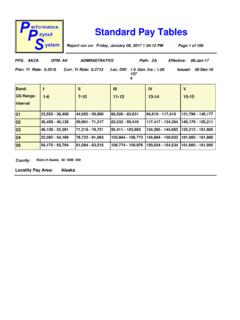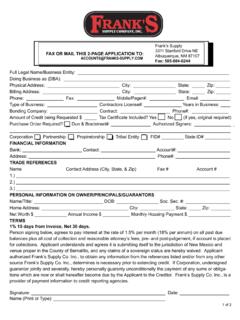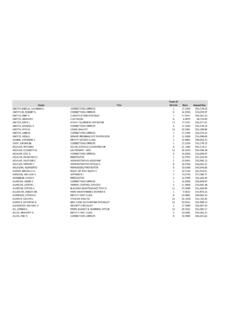Transcription of The Cognitive Foundations of Learning to Read: A …
1 Sebastian WrenThe Cognitive Foundations of Learning to Read: A FRAMEWORKSOUTHWEST EDUCATIONAL DEVELOPMENT LABORATORYC opyright 2000, 2001 Southwest Educational Development Laboratory All rights to be reproduced without permission of the Educational Development Laboratory 211 E. Seventh Street Austin, TX 78701 voice: 512/476-6861fax: 512 services byCastle CommunicationsAustin, Texas512/346-2375 Design byJanice McLemore Graphic Design , Texas512/327-7977 Southwest Educational Development Laboratory. This publication was produced in whole or in part withfunds from the Office of Educational Research and Improvement, Department of Education, under contract#RJ96006801. The content herein does not necessarily reflect the views of the Deprtment of Education, any otheragency of the Government or any other OFCONTENTSCREATION OF ASUITE OFREADINGRESOURCES.
2 3 HISTORY OFSEDL SREADINGPROJECT ..3 ACKNOWLEDGEMENTS ..4 SEDL SFRAMEWORK ANDCOMPLEMENTARYRESOURCES ..7 THEREADINGACQUISITIONFRAMEWORK: ANOVERVIEW BYWESLEYA. HOOVER ANDPHILIPB. GOUGH ..13 THEFRAMEWORKELEMENTS ..19 Language Comprehension .. 20 Decoding .. 23 Background Knowledge .. 26 Linguistic Knowledge .. 27 Phonology .. 27 Syntax .. 28 Semantics ..29 Decoding and the Cognitive Elements that Support It .. 32 Cipher Knowledge .. 33 Lexical Knowledge .. 34 Phoneme Awareness .. 36 Knowledge of the Alphabetic Principle .. 40 Letter Knowledge .. 41 Concepts About Print .. 42 Reading Comprehension .. 43 Putting the Pieces Together .. 45 USING THEFRAMEWORK ANDSUITE OFRESOURCES ..47 GLOSSARY OFFRAMEWORKELEMENTS.
3 513 AaHISTORY OFSEDL S READING PROJECTThe Southwest Educational Development Laboratory (SEDL) is a private, not-for-profit education research and development corporation based in Austin, Texas. SEDL conducts field-based research and provides research-based resources and informationthroughout the Southwest region (including Arkansas, Louisiana, New Mexico, Oklahoma, andTexas) in areas including: improvement of school performance linguistic diversity in schools the use of technology to support instruction content areas such as mathematics, reading, and scienceSEDL s reading project was funded by the U. S. Department of Education and adminis-tered by the Office of Educational Research and Improvement (OERI) under contractRJ96006801.
4 SEDL s reading project examined early literacy in grades K-2 and the preventionof early reading failure. The goals of this effort included the following: developing a framework of the Cognitive Foundations of Learning to read that organizesresearch information using that framework to organize information about K-2 reading assessment, instructional resources and strategies, and state standards providing tools and resources that facilitate tracking student achievement data assessing the utility of the developed resources with practicing teachersIn March 1997 SEDL had the opportunity to conduct additional work under its regional educational laboratory contract. Given the critical nature of literacy needs in its five stateregion, especially in the early elementary grades, SEDL chose to build materials that wouldhelp teachers in the early grades better teach s new work would focus on the creation of teacher materials based on the findings ofcognitive research.
5 While the debate had raged over the last 35 years about how best to teachreading whole-language versus phonics Cognitive science was building a consensus view ofthe Cognitive Foundations upon which successful reading competence rested. The importanceof this research was apparent: If teachers could build their understanding of this research andthen tie it to their knowledge of student assessment and teaching techniques, they would bebetter able to teach to individual student needs. In turn, students would find more success inbecoming competent readers in the early s goal was to construct a tool thatwould give teachers access to the research do so, SEDL chose to build a framework ofthe Cognitive Foundations of Learning to read, one that would both organize and synthesize the Cognitive research on reading framework, including graphic and textualinformation, would need to show the buildingblocks upon which reading comprehension rests, defining both the individual components as well as their relationships to each other.
6 Wes Hoover, SEDL s President & CEO, worked with his mentor at the University of Texas at Austin, Philip Gough, to lay out the substance of the framework (its components and theirrelationships), much of which was based on Gough s collective work in reading acquisition. Sebastian Wren wrote the text for the framework (except where otherwise noted) anddesigned the framework graphic. Dr. Wren also designed the Reading Assessment Database for Grades K-2, and wrote the accompanying text, and he collaborated with Jennifer Watts and Iliana Alanis to create the Instructional Resources Database for Grades K-2. DeborahJinkins used the framework to create the literacy profile and to organize the state standards for language arts in each of the five states that SEDL serves (Arkansas, Louisiana, New Mexico,Oklahoma, and Texas).
7 Dr. Wren and Dr. Jinkins collaborated with Brian Litke and Chris Searsto create an interactive Internet-based version of these resources. Susan Paynter provided valuable assistance and feedback as syntheses of research information presented here and SEDL s complementary tools andresources are intended to help teachers begin to incorporate reliable, tested research findingsinto their instructional pactice. This framework can also provide a frame of reference or foun-dation that will enable educators to access and use the valuable research information containedin other resources such as Beginning to Readby Marilyn Jager Adams, Preventing ReadingDifficulties in Young Childrenby the National Research Council, and Teaching Children toReadby the National Reading Cognitive Foundations of Learning to Read: A Frameworkwas developed with external consultation over a 22-month period from June of 1998 through June of 2000.
8 Theframework s content and the organization are derived from scientific research conducted in avariety of disciplines, such as education, linguistics, Cognitive science and psychology. Theaccompanying text was created to support teachers understanding of the elements and thestructure represented in the graphical by Bret Brookshire5In the course of developing the framework and the complementary resources, SEDL staffcollaborated with 71 elementary teachers representing seven elementary school campuses in twostates. SEDL would like to sincerely thank the teachers at Algodones, Cochiti, Placitas, andRoosevelt elementary schools in theBernalillo Public Schools, Bernalillo, NewMexico; the teachers at both the LearningCenter and the Elementary School in theFredericksburg Independent School Districtin Fredericksburg, Texas; and the teachers at Bruce Aiken Elementary School in theBrownsville Independent School District,Brownsville, Texas.
9 These teachers sacrificedhours of their valuable time consulting withSEDL staff to develop these resources. Theyprovided valuable feedback about the utilityand applicability of the Cognitive frameworkand other resources, and their time, experi-ence and hard work are greatly would also like to thank the Bernalillo,NM, Brownsville, TX, and Fredericksburg,TX, Independent School Districts for theirsupport and assistance in this project; with-out their cooperation, these resources couldnever have been created. In the course of completing the final drafts of these resources, SEDL consulted with review-ers and experts from a variety of fields. We want to thank Vicki Altland, Philip Gough, SylviaLinan-Thompson, Keith Stanovich, William Tunmer, Krista Underwood, Theresa Watson,Jennifer Watts, and Jody Westbrook for their insightful comments and feedback on the frame-work document.
10 We would also like to thank Carmen Alvarez-Rodriguez, Gloria Barrett,Maria Lydia Borrego, Stella Mata, Norma Mu oz, and Isabel Reyes for contributing activitiesfor the instructional activities database that are appropriate for use with Spanish-speaking children. Finally, SEDL s reading project staff would like to thank our colleagues working onother projects within SEDL who took the time to examine these resources and provide valuablefeedback. The time they took away from their own work to help in developing these resourcesreflects their tireless commitment to quality education. Creating these resources was truly a collaborative effort, and we appreciate the time and energy that people generously SFRAMEWORK ANDCOMPLEMENTARYRESOURCESSEDL SFRAMEWORK ANDCOMPLEMENTARYRESOURCES.
